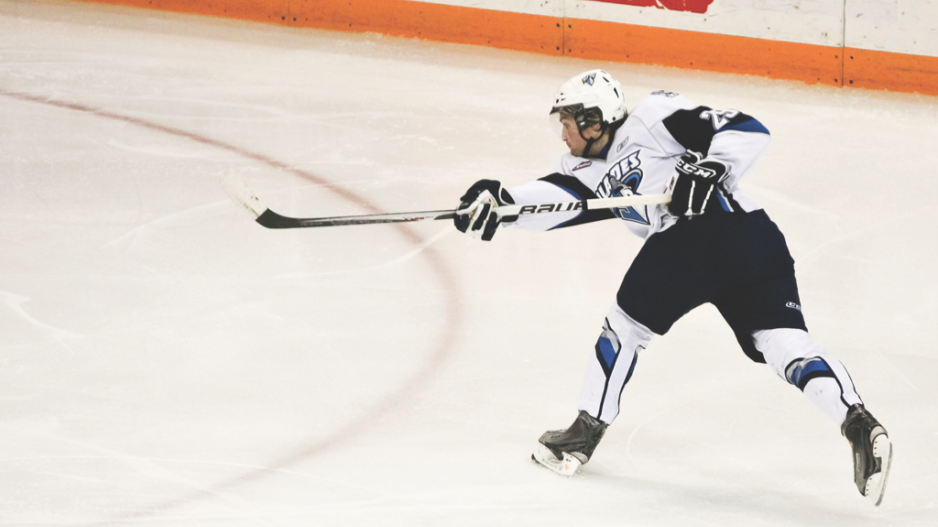Are major junior hockey players apprentices or interns that are reasonably rewarded with college scholarships? Or are they professionals who risk injury for entertainment and rightfully deserve to be paid $10,000 a year?
That question is before courts in a proposed class-action lawsuit that points to the three top-tier junior leagues and their teams in Canada and the U.S. as multimillion-dollar businesses with multiple revenue streams.
Charney Lawyers in Toronto is seeking certification of a class-action lawsuit in Alberta and Ontario for outstanding wages, overtime and vacation pay.
In February, the BC Liberal government quietly inserted a clause in the Employment Standards Regulation to exempt B.C.’s six Western Hockey League (WHL) franchises from the Employment Standards Act, “if the player is entitled to receive a scholarship equal to or greater than the eligible cost of a post-secondary program of the player’s choice.”
Vancouver Giants owner Ron Toigo and Victoria Royals owner Graham Lee have, coincidentally, donated $161,925 and $66,650, respectively, to the BC Liberals since 2005, and Labour Minister Shirley Bond is a Prince George Cougars fan.
The B.C. amendment happened in contrast to the public process that unfolded south of the border in Washington state, which has four WHL teams. Gov. Jay Inslee signed the bill in May 2015 that said those aged 16 to 20 who play for a junior hockey team in an arena owned, operated or managed by a public body are not subject to labour laws.
The state’s Labor & Industries office received a complaint from the nascent Canadian Hockey League Players’ Association alleging WHL teams paid players as little as $35 a week to practise, play and travel 50 hours a week.
The WHL argues that its play-a-year, study-a-year scholarship policy – some 3,500 players have received $11 million in free post-secondary education since 1993 – is adequate compensation.
An October 2014 legal opinion by the state attorney general’s office said WHL owners claim their players are trainees, “engaged in amateur sports with a goal of developing their skills to perhaps one day play professionally.”
The legal opinion said the players are different from high school and college athletes, because they play for commercial businesses that “receive an immediate advantage from the players’ performance.”
Washington cited a November 2000 Canadian tax court order for the Brandon Wheat Kings to pay unemployment taxes for players. Yet it acknowledged the chance that courts could decide that the players benefit more than their teams, in the long run, from their time in the WHL.
“Major junior hockey is not a recreational activity. It is a full-time job,” testified Langley’s Lukas Walter in an affidavit.
The former Tri-City American and Saint John Sea Dog is one of two proposed representative plaintiffs in the class-action lawsuit. Walter’s affidavit said he was paid just $200 a month in his first WHL season with Tri-City and $476.66 a week plus $90 a week for accommodation as an over-age 20-year-old with the Sea Dogs of the Quebec league.
In major junior, the officials are paid and several arenas hold 10,000 paying fans. Advertising is plastered throughout the venues that sell alcohol, food and branded merchandise. There are advertising-supported broadcasts on TV, radio and the Internet.
“If you did not know any better, you would not be able to tell the difference between a CHL [Canadian Hockey League] game and an NHL [National Hockey League] game, except maybe in the size of the players, given our ages,” said Walter’s affidavit.
Sportsnet’s 50-game-a-season CHL and MasterCard Memorial Cup broadcast deal runs through the 2025-26 season. The NHL grants the CHL $10 million a season, which is shared with the 60 teams.
The Kamloops Blazers sold for $7.95 million in 2007 and the Cougars for $7.08 million in 2014. The Mississauga IceDogs garnered $10.68 million 10 years ago (adjusted for inflation), moved to St. Catharines, Ontario, and became the Niagara IceDogs. Court documents show that in 2013-14, their televised home games helped sell ads on rink boards for $4,000 to $5,000, in-ice logos for $8,000 and score clock panels for $10,000. They took all net revenue of ad sales in the arena and all revenue from the arena’s retail store, plus 50% from the sale or lease of suites and club seats and beer-pouring rights.
Elsewhere, the Kitchener Rangers scored almost $6.3 million in revenue in 2014, including $3.34 million in tickets and $2.38 million in sponsorship.
So why not a minimum wage?
Brock University assistant professor Kevin Mongeon was hired as an expert by Charney and concluded that a minimum wage would have a negligible effect on teams. Based on a 40-hour work week for 25 players over 25 weeks at $11.25 an hour, Ontario teams would spend $281,250. (About $10,000 less in B.C., where the minimum wage rose to $10.85 this fall.) Mongeon wrote that owners have strategic reasons to plead poverty, because claims of losses enhance their position to negotiate for better arena leases. •




